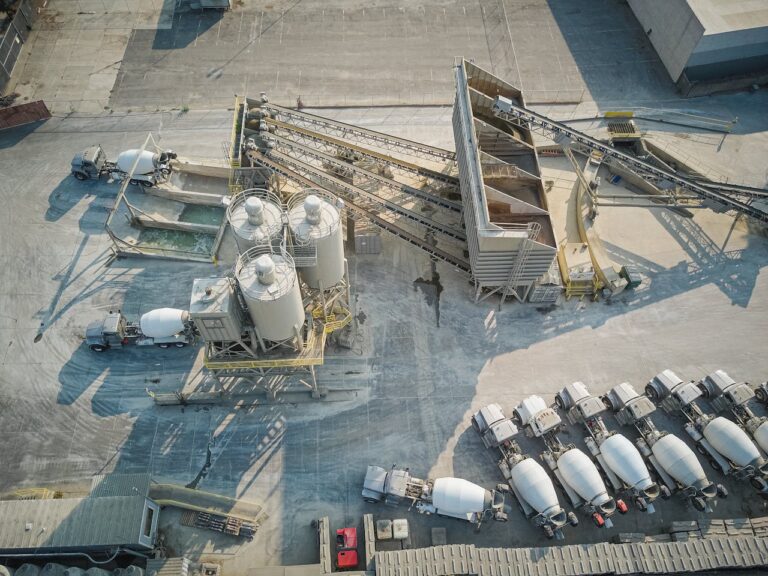A bond for industrial decarbonisation

Labanya Prakash Jena and Sangeeth Selvaraju propose a new type of bond to fill the financing gap that exists for decarbonising heavy industry.
Industry is a key sector for economic growth in emerging market and developing economies (EMDEs) and is often characterised by fossil fuel-based energy-intensive units. In EMDEs, ‘hard-to-decarbonise’ heavy industries contribute a significant share of greenhouse gas emissions. Four crucial industrial subsectors (i.e. steel, cement, aluminium and chemicals), identified by the OECD in 2023, produce almost a quarter of global emissions. However, current levels of annual investment for decarbonising these subsectors are woefully low: in 2021 they received a mere US$15 billion in investment (2020–21) compared with required estimates of US$70 billion by 2030 and US$125 billion by 2050.
To remedy this problem, we propose two innovations: extended-duration deep discount bonds and a ‘Carbon STRIPS Bond’. For investors, these would provide the financial returns and safeguards against the risks associated with the climate transition. Industrial corporations can also benefit from the instruments’ strategic decoupling of carbon securities from traditional debt obligations. In this way, companies can invest in long-term, decarbonising technologies without compromising their financial stability. The overall benefit of this type of instrument is that the savings in carbon emissions result in the generation of credits for the bond holders in place of the coupon payment. Thus, the firm benefits financially by not paying the coupon and undertaking investment in the emissions saving process.
Before we detail these proposals, we look at the multi-faceted challenges associated with industrial decarbonisation.
Structural, financial and policy challenges
A combination of challenges has resulted in a pitiful flow of capital to net zero technologies, investment in which is still significantly lower than needed.
Major barriers to decarbonisation are the capital expenditure-heavy structure of the industrial sector and the higher costs of low-carbon industrial solutions compared with carbon-intensive alternatives, which together exacerbate companies’ upfront capital requirements. Currently, the demand pull for green industrial commodities such as green steel or green cement is not pervasive and therefore the market is limited. The industrial sector is structurally cyclical, partly because of the sensitivity of prices of commodities like steel and cement to changes in the business cycle. During market downturns, the unwillingness to pay a green premium for these commodities is further reinforced. This means that revenues and cash flows from low-carbon investments are less visible and more difficult to forecast, and therefore more challenging to finance by traditional project finance.
These problems are confounded by the depression of companies’ profit margins, returns on equity, and free cash flows in the short term, which results from the vast capital expenditure needed for low-carbon technologies and research and development (R&D). Raising new debt capital in this environment becomes challenging; increasing financial leverage without a commensurate increase in profits or cash flows. This risks putting off shareholders, leading to a drag on stock prices. It is important to note, however, that the efficiency improvement benefits, both commercial and environmental, that would result from such technologies and R&D would be accrued over the long term, likely over a period spanning decades. This creates a ‘temporal mismatch’. Thus, companies must adopt a long-term horizon for raising capital in order to gain the financial benefits.
Additionally, policy and financial conditions do not support such long-haul interventions. The absence of realistic carbon pricing in most EMDEs means that there is no incentive for the industrial sector to invest in technologies to make existing high-carbon processes more efficient. Since a tool like the carbon price alone has not driven transformational investments in industrial decarbonisation technologies almost anywhere in the world, another type of financing instrument or policy tool is needed in EMDEs to drive investment in efficiency improvements for best-available old technologies and, where feasible, low-carbon technologies.
Combining a deep discount bond and a STRIPS bond
The first financial innovation we recommend addresses the temporal mismatch through extended-duration deep discount bonds offering debt capital for over 20 years. These instruments fundamentally restructure the financial burden by deferring coupon payments for the initial 15–20 years, significantly reducing annual cash flow pressures on low-carbon industrial operations during their most vulnerable early development phases.
The economic logic is compelling: by limiting annual repayment obligations, these bonds enhance the cost-competitiveness of clean industrial production during the critical market development period. The deferred coupon structure acknowledges that low-carbon commodities may not achieve price parity with conventional alternatives until carbon pricing mechanisms mature and tighten globally.
Crucially, the post-deferment coupon payments can be partially linked to the fair value of carbon abated through low-carbon industrial production. This creates an innovative mechanism by which future carbon savings translate into financial returns, aligning investor interests with climate outcomes. As carbon pricing regimes expand globally and the viability of carbon offset credits takes off, this approach links our financial instrument to carbon offset credits.
The second financial innovation draws inspiration from the Separate Trading of Registered Interest and Principal Securities (STRIPS) concept, creating a Carbon STRIPS Bond in which debt obligations and carbon securities are separated and traded independently. This disaggregation unlocks new value streams and risk management possibilities.
In this structure, corporations issue bonds at a discount with lower yields, compensated by the carbon securities component. Investors receive both traditional debt instruments and tradeable carbon credits derived from verified decarbonisation activities. This dual-security approach reduces the effective cost of capital for issuers while providing investors with diversified exposure to both fixed-income and carbon markets.
The carbon securities component offers multiple benefits. Investors can either trade these instruments immediately for liquidity or hold them as a hedge against climate transition risks. The global carbon credit market, currently valued at US$1.4 billion, could reach US$7–35 billion by 2030, suggesting significant appreciation potential. Moreover, carbon credit supply could grow 20- to 35-fold by 2050, with average costs potentially reaching US$60 per ton of CO2 equivalent in 2030 and US$104/ton in 2050.
Combining these two innovations in a new type of financial instrument presents a win-win for investors, industrial corporations and climate action. A new type of bond for industrial decarbonisation serves as an essential and far-reaching catalyst for positive change.
The authors would like to thank Daisy Jameson for her valuable feedback on this commentary. The authors would also like to acknowledge that a version of this concept is forthcoming in a book on climate finance.

